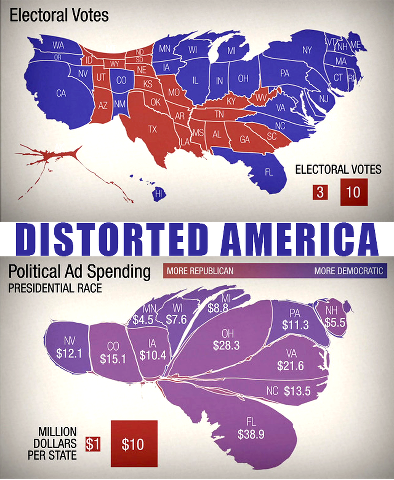Here's an illustration of where political ads were spent on the national election this year:

- ec2012.png (313.57 KiB) Viewed 246 times
Obviously this looks nothing like a population map of the US. And a population map of the US is distorted enough by the Electoral College as it is: one person voting in one of the smallest states is three times more likely to influence his state's electors than one person voting in a big state. There are roughly 600,000 people per elector in California, but only 200,000 people per elector in Wyoming.
Instead of outright abolishing the Electoral College (though I'd be happy with that), a Congressman recently floated a hybrid solution: allow the states to keep their electors, but create 29 "at large" electoral votes to be awarded to whichever candidate won the national popular vote.
http://thehill.com/blogs/blog-briefing- ... oral-votes
29 may be an arbitrary number, but a bloc that big would mean that campaigning would expand from a dozen battleground states to the whole country. Candidates would actually look at issues in California and Texas almost as much as local problems in Ohio and Florida. People living in deep red or deep blue states would increasingly get involved in campaigning instead of writing off their states as a sure win or loss. Conversations about politics that might not otherwise exist would be had between friends even if the state they reside in is guaranteed to go blue or red. Voter turnout would increase dramatically. Democracy would win.